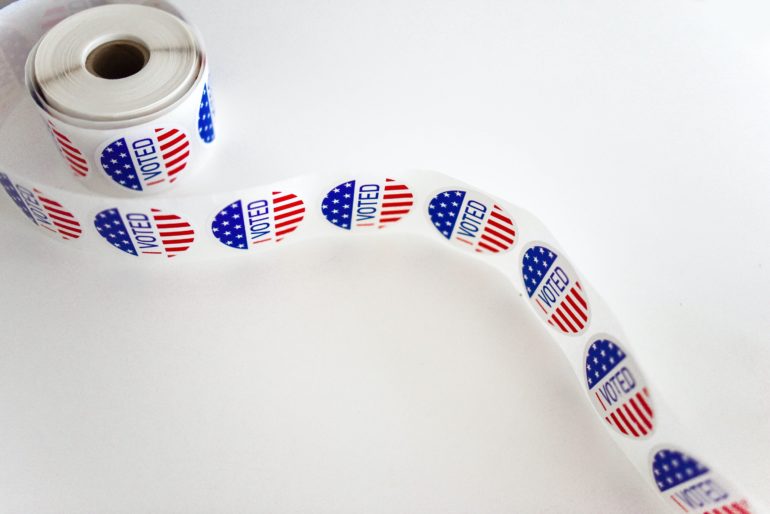The coronavirus pandemic forced states across the nation to transform the way their residents voted in 2020, ramping up get-out-the-vote messaging and allowing for more people than ever to vote by mail.
But what’s the best way to let residents know about new voting rules? And how much does something like voting by mail increase voter turnout overall?
Political scientists Daniel Hopkins and Marc Meredith looked at these questions during Philadelphia’s 2020 primary, and worked with city officials to run an experiment to see whether an inexpensive postcard campaign about mail-in voting would be effective. They partnered with Anjali Chainani, Nathaniel Olin, and Tiffany Tse of Philadelphia Mayor Jim Kenney’s policy office to get the project rolling.
Together they sent 47,000 randomly selected Philadelphia voters postcards encouraging them to vote by mail in the June 2 election and describing how to apply to do it, while the city was still under a stay-at-home order to curb climbing COVID-19 cases. The study was funded by a School of Arts & Sciences Making a Difference in Diverse Communities grant.
Their findings, published in the Proceedings of the National Academy of Sciences, show that a single postcard campaign increased applications to vote by mail by 0.5 percentage points, and boosted mail ballots cast by 0.4 percentage points.
“As the pandemic hit, it seemed like a critical time to see if providing basic information about the deadline for applying would move the needle in terms of people’s voting by mail and maybe even in terms of their voting overall,” says Hopkins, who works with city officials on a number of projects using social and behavioral sciences to help advance their goals. “We were successful in increasing voting by mail and helping in a small way to keep people safe while exercising the franchise.”
One critical question in the experiment asked, “Does voting by mail cause a substitution effect, where people who were already planning to vote now simply vote by mail?”
“We don’t have precise estimates due to our sample sizes, but it does appear as though at least some of our people who voted by mail would otherwise not have voted,” Hopkins says.
The study also found the postcards were equally impactful for Black and white registrants.
To produce and mail a single postcard cost less than $1, Meredith says, making it a relatively cost-effective way to reach voters and increase turnout. That’s good news for a cash-strapped city like Philadelphia.
“You want to know not just is this effect going to be positive or negative, but you want to get a sense of the magnitude of the effect. It’s only then that you can start to compare the cost effectiveness of different techniques,” says Hopkins.
However, a key reason why some of the experiment’s votes counted at all was due to a last-minute executive order signed by Pennsylvania Gov. Tom Wolf that allowed ballots to be counted even were received after the election.
Hopkins says, “Here in Philadelphia and elsewhere, there were significant delays as these overworked boards of election had to get mail-in ballots out and then tally them for the first time at scale and do that in the midst of a pandemic.”
A sizable fraction of their experiment’s ballots was received after the election, he says. “A postcard can matter, but it matters in a particular context in which decisionmakers have structured the rules for what will and what won’t count.”
Hopkins and Meredith ran a follow-up experiment in the general election and are awaiting the final data from it. In that study, they used a postcard to communicate with voters about the steps needed to successfully cast a mail ballot, with advice including returning it quickly and making sure to put it in the secrecy envelope.
“We’re excited to see what that shows,” says Meredith.
Voters with highest COVID-19 risk more likely to cast mail ballots, survey shows
More information:
Daniel J. Hopkins et al, Results from a 2020 field experiment encouraging voting by mail, Proceedings of the National Academy of Sciences (2021). DOI: 10.1073/pnas.2021022118
Provided by
University of Pennsylvania
Citation:
Mailing it in: Getting the word out on getting the ballots in (2021, February 3)
retrieved 3 February 2021
from https://phys.org/news/2021-02-mailing-word-ballots.html
This document is subject to copyright. Apart from any fair dealing for the purpose of private study or research, no
part may be reproduced without the written permission. The content is provided for information purposes only.



